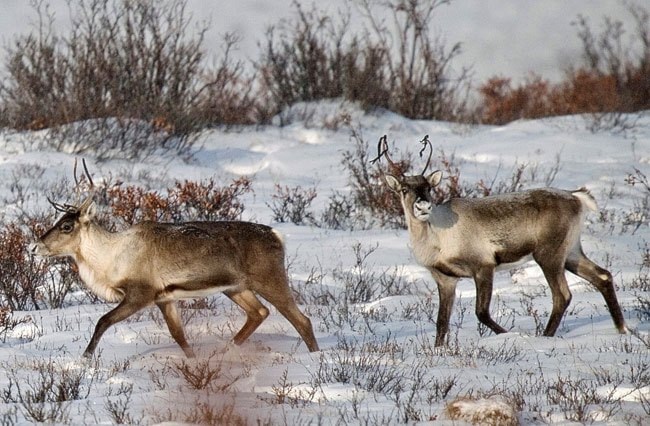It’s now illegal to shoot cows of the Porcupine caribou herd in the Yukon.
The territorial government rolled out tougher hunting regulations on Monday to protect the herd, which has dwindled to half its size in the past 20 years.
The new rules include a blanket ban on shooting cows, which applies to all hunters, including aboriginals.
Licenced hunters are restricted to taking one bull annually, down from a previous limit of two.
All hunters also must report their kills. Yukon’s Environment Department plans to set up reporting stations in Old Crow and along the Dempster Highway, both near the Northwest Territories border and near Dawson City.
The regulations, approved by cabinet on September 25, come in time for the autumn hunt along the Dempster Highway.
Conservation officers who monitor the hunt probably won’t give out many tickets this year. Instead, they plan to focus on explaining the new rules to hunters.
Violators could be given a $100 ticket. Or serious offenders could be taken to court and face bigger fines and possible jail time.
The herd’s current size is estimated to be about 100,000, down from a count of 178,000 in 1989. But the current population is only a rough guess because poor weather has hampered annual aerial surveys since 2003.
One suspected reason for the decline is the number of cows being hunted. Cows are believed to make up 60 per cent of a total annual hunt of approximately 4,000 caribou.
Every cow killed is equal to losing 23 caribou over 10 years, because not only is the cow lost, but so are its offspring and the offspring of its descendants.
If the hunting of cows were to continue unabated, “the herd would pretty much disappear,” said Doug Larsen, the Yukon government’s representative on the Porcupine Caribou Management Board. “We want to prevent that.”
But, again, these hunting numbers are only rough estimates by the Porcupine Caribou Management Committee.
Accurate hunting numbers are not available because, so far, not all First Nations have reported the number of caribou taken by their members, and the last attempt at a count of the total harvest was made more than a decade ago.
Old hunters still bristle at the mention of game wardens, and remember when seemingly arbitrary rules were imposed upon them.
Discontent with paternalistic hunting restrictions was a driving force for the creation of modern land claims.
Today, the right to hunt of First Nations and Inuvialuit is enshrined in Canada’s Constitution. Restricting this right is only permitted if a “valid conservation reason” exists.
Yukon’s new hunting regulations are being described as “interim measures” because they’re supposed to only serve as a stop-gap until a management plan is completed by the Porcupine Caribou Management Board, which has representatives from the federal government, the Yukon, the Northwest Territories and five First Nations: the Na-Cho Nyak Dun, Gwich’in Tribal Council, Inuvialuit Game Council, Tr’ondek Hwech’in and Vuntut Gwitchin.
The board released a draft plan in June, which includes measures that are less stringent than Yukon’s new regulations. Most notably, the board is currently only recommending a voluntary bulls-only hunt.
But such voluntary measures have rarely had much success, counter territorial officials.
The board is currently waiting for government responses, said chair Joe Tetlichi. He expects to receive comments by the end of October and then to hold a summit to try to resolve outstanding issues, such as the tricky matter of how to divvy up a total allowable harvest that is expected to be just three-quarters of the current take.
Contact John Thompson at
johnt@yukon-news.com.
